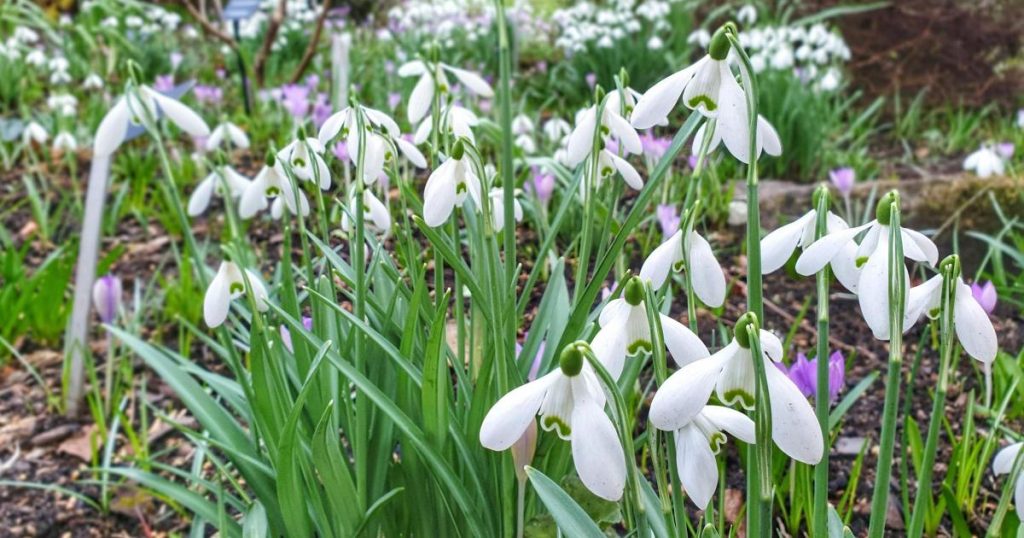The annual event, taking place this year on Saturday, January 25, is a firm fixture in the diary of horticulturists, attracting hundreds of green-fingered enthusiasts and collectors to the grounds in Bulls Cross, anxious to see rare varieties of the Galanthus bulb.
Snowdrops, one of the earliest harbingers of spring, are delicate bell-shaped winter flowers that bloom as early as January or February, defying the prevailing winter weather.
“Collectors will be captivated by the beauty of these flowers,” Myddelton House head gardener Julia Bigham says. “They can find the perfect addition to their own garden at this magical time of year.”
A lecture on the flower is being given by ‘Mr Snowdrop’ Joe Sharman, one of the country’s leading breeders.
The eight-acre site was given a Green Flag award in 2024 for its “sea of snowdrops” across its meadows and the ‘Green Heritage Site’ accreditation by Historic England.
The gardens were created by the famous botanist Edward Bowles, who was born at Myddelton House in 1865. He coined the term ‘galanthophile’ to describe a snowdrop enthusiast.
A rare snowdrop discovered at the gardens was aptly named Galanthus plicatus ‘EA Bowles’ in his honour.
Myddelton House was built in 1818 by Henry Carrington Bowles, a London mapmaker who named it in honour of engineer Hugh Myddelton, who created the New River in 1613 to supply London with fresh water that also fed into the gardens until 1968.
The house and gardens passed to the Royal Free Hospital School of Medicine in 1954 after Bowles’ death. Medicinal plants were grown there until 1967, when it was purchased by the Lee Valley Regional Park Authority, which restored the original gardens.
The New River was diverted around the gardens in 1959 and the feeder channel filled in with rubble from the Victoria Line railway construction. Lawns were laid with 100 tonnes of topsoil donated by Spurs’ White Hart Lane stadium.
The grounds also have ornamental buildings and follies collected by Bowles, such as the Enfield Market Cross, which he rescued from a builder’s yard where it had been dumped by Enfield urban district council in 1901 to be rendered into rubble.
Many of Bowles’ original plants remain, such as Macrobotrys, which flowers in May, grown from a seed planted in 1903, and the Bowles Mauve Erysimum wallflower.
Admission to the January 25 Snowdrop Sale is £5. Tickets for the snowdrop lecture are on Lee Valley’s “lvrp.digitickets.co.uk” website link.




